The editor is in on the start of the new Impact Airguns Revolution. This could be the start of something good
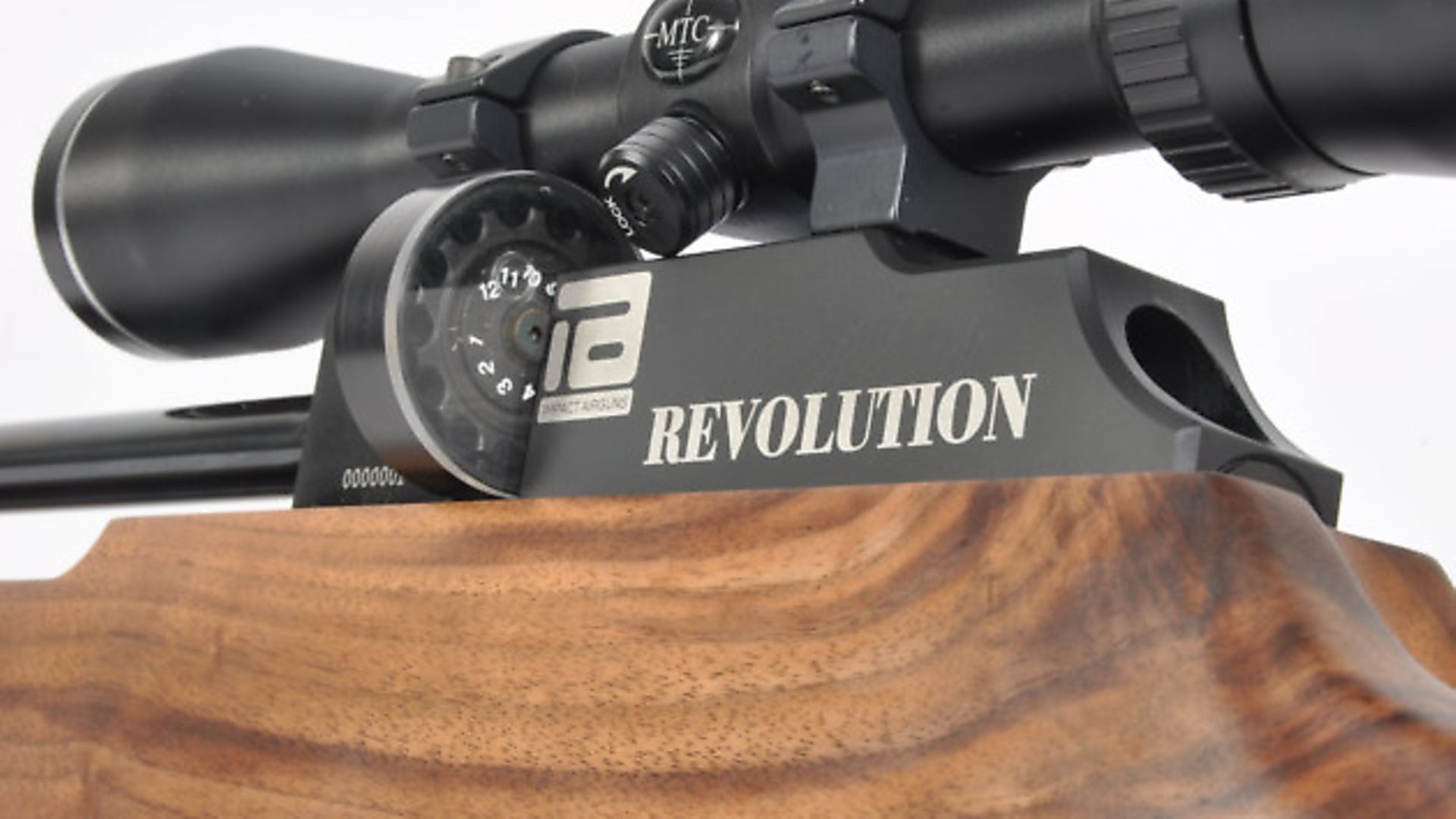 credit: Archant
credit: Archant
Technical Specification
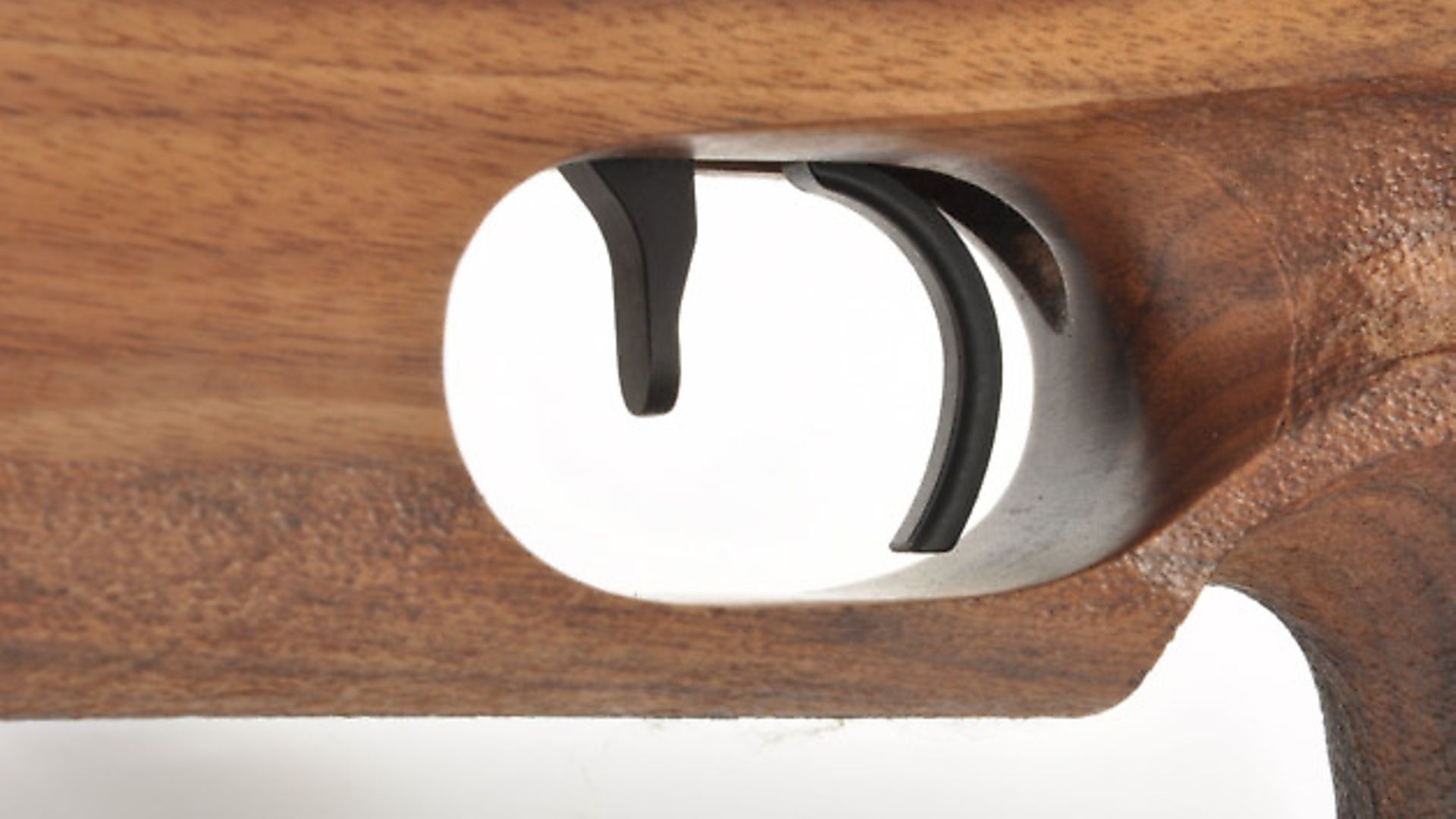 credit: Archant
credit: Archant
Model: GSX 600
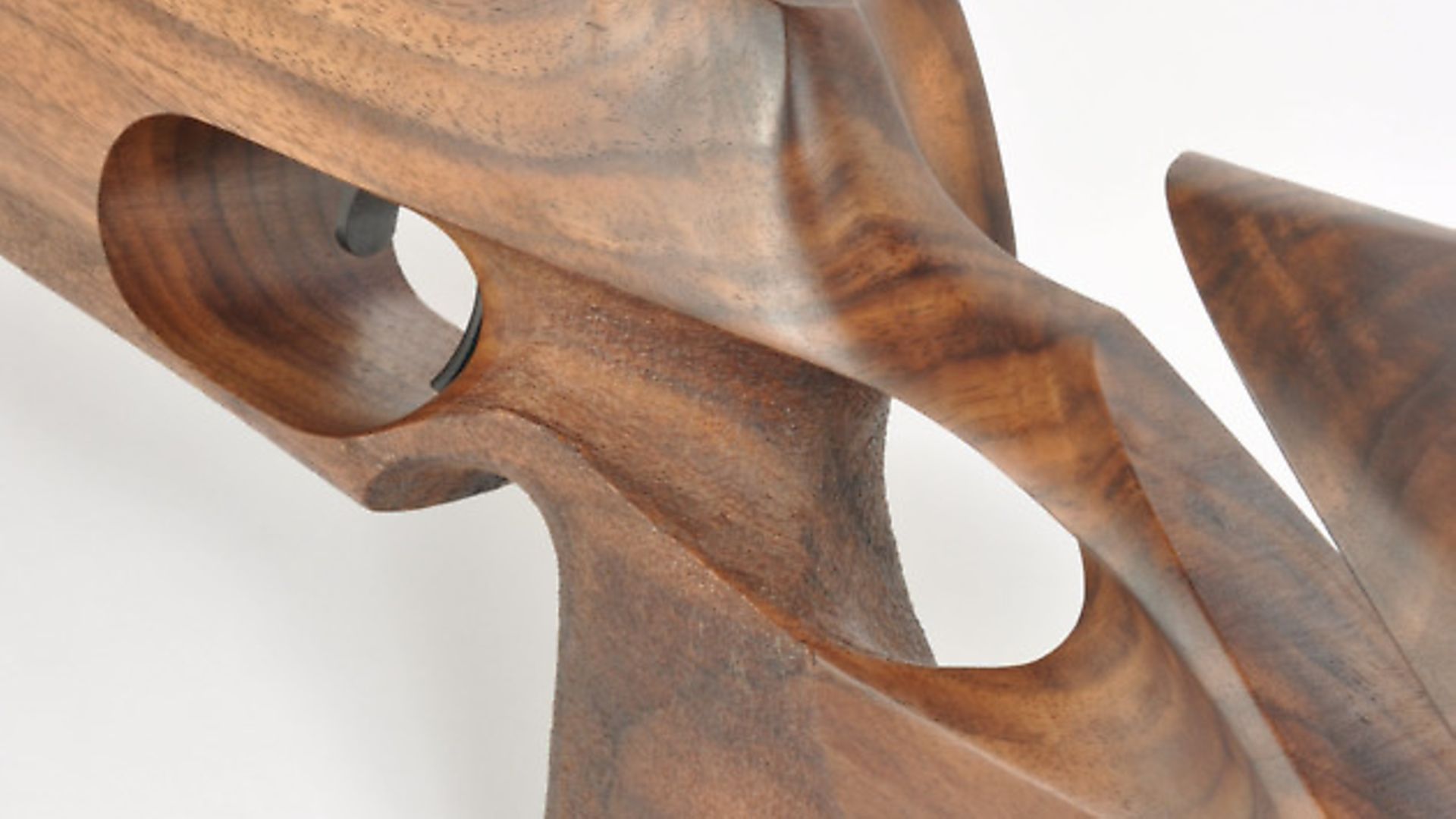 credit: Archant
credit: Archant
Manufacturer: Impact Airguns
 credit: Archant
credit: Archant
Country of origin: England
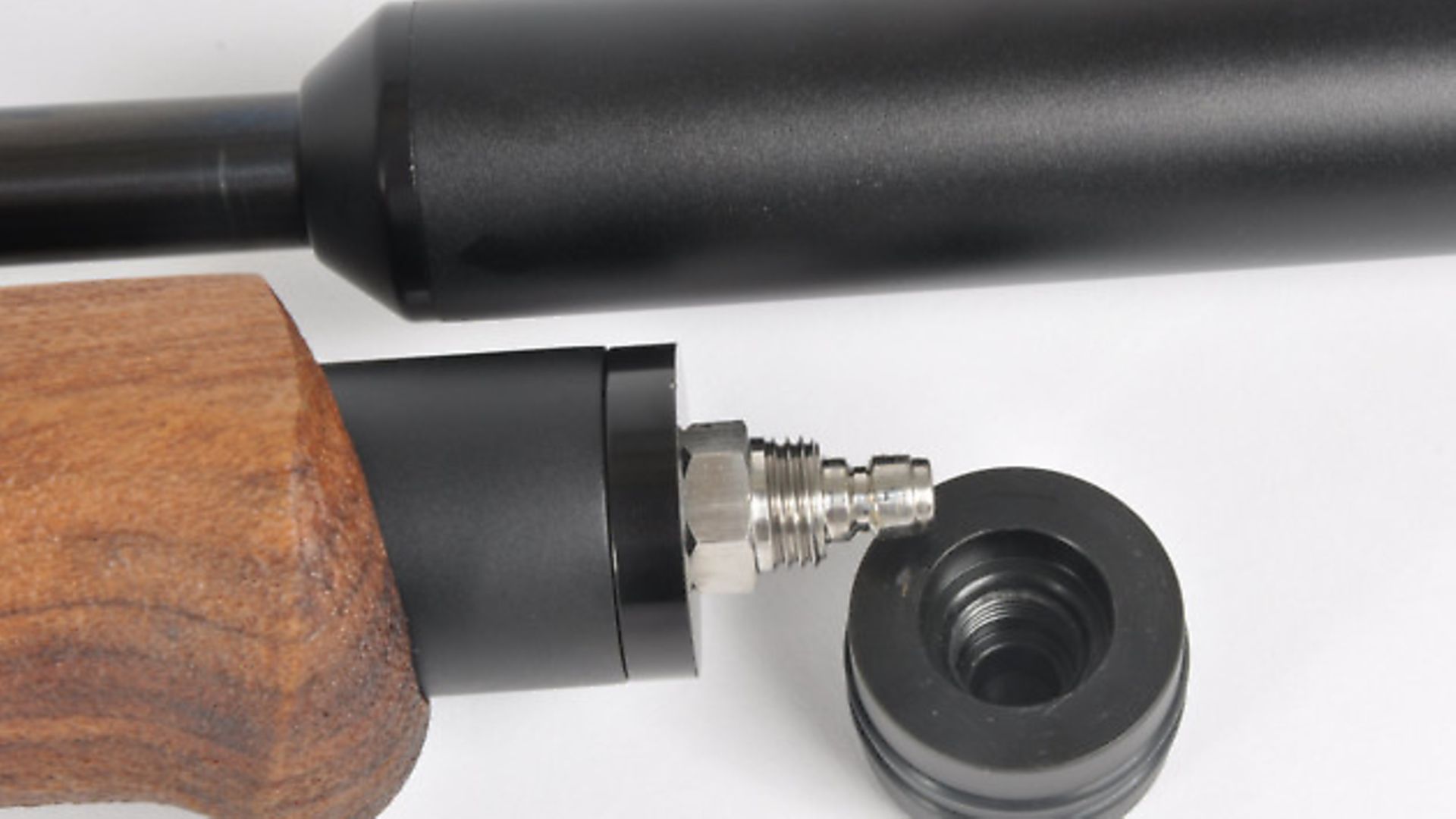 credit: Archant
credit: Archant
Price: £1295
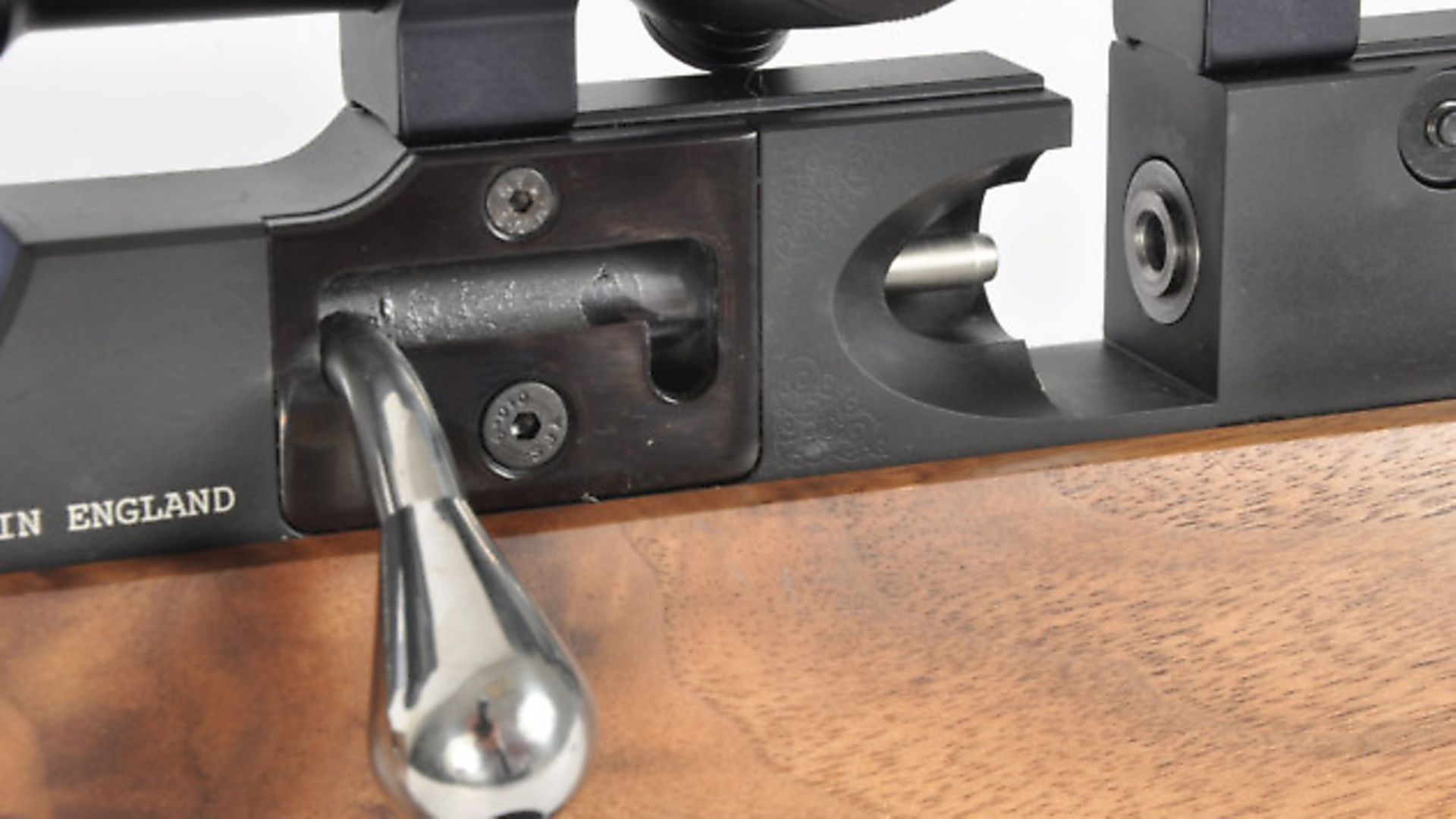 credit: Archant
credit: Archant
Type: Right-hand, pre-charged, multi-shot sporting rifle
 credit: Archant
credit: Archant
Calibres: .177, .22., .20 and .25
 credit: Archant
credit: Archant
Cocking: Bolt-action
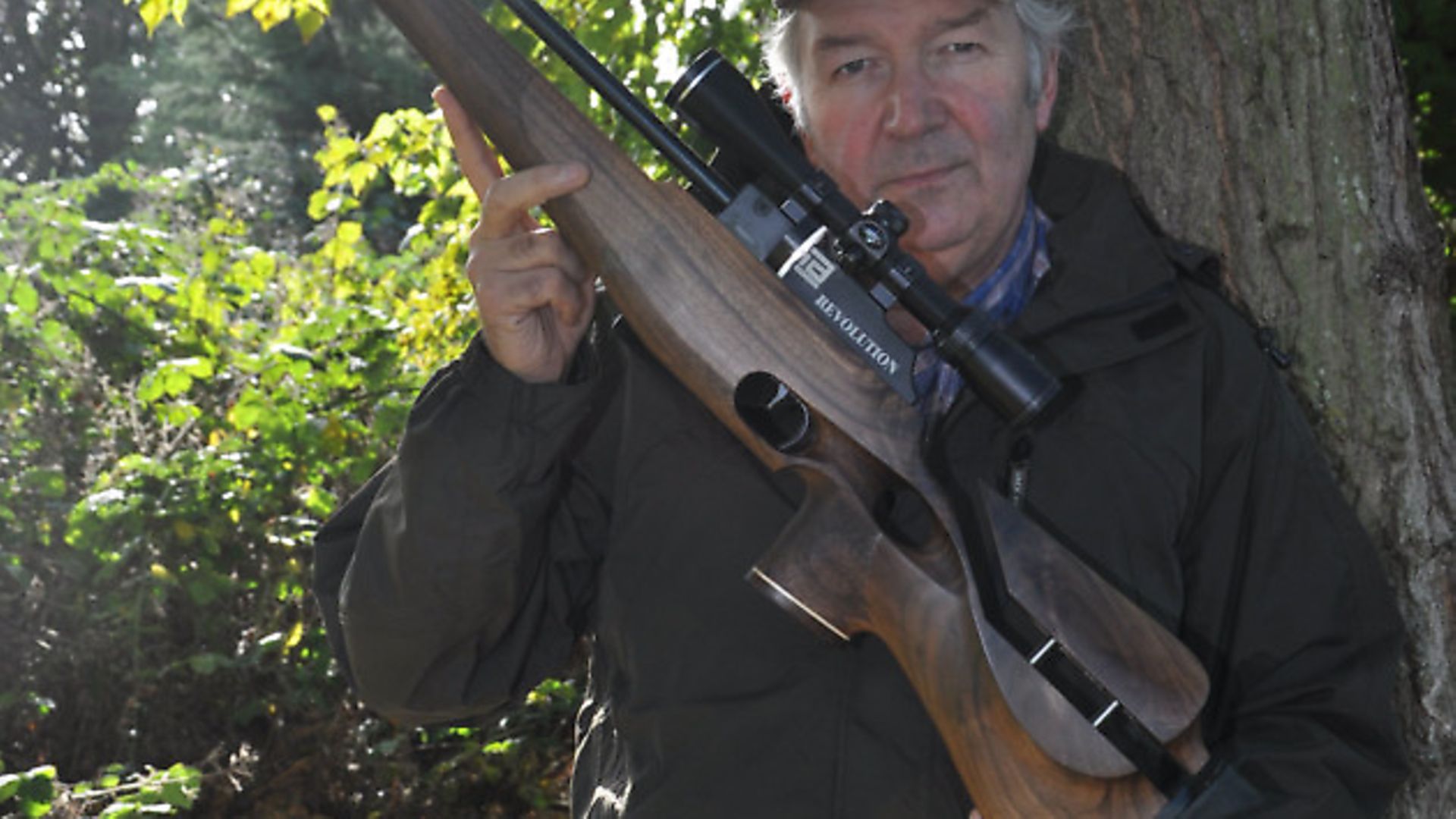 credit: Archant
credit: Archant
Loading: Via removable, rotary magazine – 12-shot .20
Trigger: 2-stage, adjustable unit
Stock type: Oiled walnut, right-hand, full-control sporter, with adjustable cheek piece and butt pad
Weight: 4.1 kg (9lbs) including 3-9 x 40 scope
Length: 750mm (40.5ins)
Barrel: 355mm (14 ins) Currently German-made match type. Could change to unique specification model
Fill pressure: 200-bar
Shots per charge: .22, 130-plus. .177, 100-plus
Variation over 30 shots: 8 fps using H & N FT Trophy straight from the tin
Average energy: 11.7 ft.lbs.
Best group at 40 yards: 15 mm diameter
Favoured pellet of test rifle: H & N FT Trophy
Options: Four proposed models in range: GSX 100, 200 (fitted with 400cc buddy bottle), 500T (Tactical stock) and 600 shown. All actions identical, all fitted with AirTech 250 silencers (as shown)
Contact: Impact Airguns on 01353 775 353
We’ve been going a bit prototype potty, lately, and I’ve got some more of the same for you this month with the Impact Airguns Revolution GSX 600. The what? Yes, it’s a bit of a mouthful, but the real news is that it’s a hell of an airgun, but then it has to be, because it’s got a legendary act to follow. Confused? You won’t be.
This prototype GSX 600 is the natural successor to the Theoben Rapid 7, which was the rifle that began the pre-charged multi-shot ‘revolution’, so the new name is entirely apt. Impact Airguns is based in the former Theoben factory in Cambridge, and the Revolution range – currently running at four models with the GSX 600 as the flagship – is described by Impact Airguns’ director, Chris Whistler, as ‘the best of the previous technology, with a range of significant upgrades.’ That sounds all sorts of positive, but some specifics would be even better, and before I reveal them let’s take a look at where those upgrades came from and why.
When Chris Whistler decided to make his move for the former Theoben factory he began an in-depth study of the company, its products and potential new directions for what would become Impact Airguns. That study revealed the importance of ex-Theoben main man, Darren Godfrey, in the grand scheme of things, and recruiting him was Impact’s first major statement of intent. With Darren on board, the research intensified and all avenues of potentially useful information were explored.
Over six months later, the blueprint for the new company and its products was in place, the required acquisitions had been completed, and the upgrades list finalised. Among those upgrades was improved customer service and a major reduction in waiting times for the rifles. As far as product improvements went, Darren and Chris invited input from Theoben owners and enthusiasts, as well as those who had carried out successful modifications to their rifles.
All valid sources were listened to and many mods’ were tried. Some worked well and formed the basis of mechanical upgrades, others didn’t lend themselves to production and were discounted. The key to the new direction was the act of consultation and the listening that accompanied it. It’s what all good companies do, and Impact Airguns assure me that it’s a major part of their future. That’s all very nice and reassuring, but what’s actually been changed on the technical side of things? Let’s find out.
Revolution Overview
Those who remember the Rapid range, and that’s most of us, will take one look at the new rifle and nod in recognition at the action block, barrel configuration, pellet magazine and taper-tipped silencer. The trigger blade and safety-catch look familiar, too, and the truly eagle-eyed will detect the trademark Theoben scope mounting rail. Now for the changes, of which there are many.
Most obviously, the buddy-bottle has been replaced by a conventional 120cc air reservoir, and that allows a proper fore end to extend its finger-friendly welcome to the shooter’s supporting hand. This reconfiguration of the rifle’s air supply not only looks miles better, it has an equally pleasing effect on handling. More of the hands-on stuff later, but for now let’s study the Revolution’s barrel.
In fact, we won’t be doing too much studying of this particular barrel, because it’s likely to be replaced. You see, the standard German, match-grade barrel on the prototype may give way to a unique English-made one, and it’s made to a configuration that hasn’t been seen on any production airgun, so if you’re thinking ‘SmoothTwist’, you’re wrong. If all goes well in the final stages of development, I’ll be testing that barrel next time out, so yet more interesting times ahoy for those of us who are interested in such things.
The action block exterior looks pretty much identical to that of a Rapid, but what’s going on inside it has changed, and very much for the better. First, the firing valve has been modified with a selection of classified changes and the same goes for the regulator. As is normal, and understandable, in matters of technical development, those who carry it out are reluctant to reveal all. Thus, the main response to my request for intimate detail was a few nods, the occasional wink, and loads of ‘well, let’s just say we’ve made it work better’ stonewalling. OK. What really matters is how the upgrades work in the real world, and I’ll be finding that out for myself soon enough.
Trigger Tweaks
You’ll find a subtle, yet highly worthwhile, improvement to the two-stage adjustable trigger mechanism, in that Darren Godfrey personally fettles each unit. He’ll use a combination of Arkansas stones and diamond files to lap, hone and set the contact surfaces of the sears, before building each trigger system into its rifle. Darren’s a highly experienced shooter and knows exactly how a proper trigger should feel, so this upgrade is definitely worth having.
The magazine is practically as-was, because it works perfectly, but the bolt-handle that activates it has been totally transformed. Gone is the ‘ball on a stick’ design, and in comes a practical pear drop profile, that’s easier on the hand and the eye. I was also pleased to see that Impact Airguns has retained the ability to load pellets manually, direct to the breech, via the ‘scoop’ in the right-hand side of the block. With the magazine removed, and a little digital dexterity, pellets can fed into the barrel, although I’ve yet to master the action on a frosty, sausage-fingered morning in the hunting field. Still nice to have the option, though.
Ergonomics
The mechanical efficiency of the GSX 600 is enhanced, maximised, and even rivalled, by the rifle’s superb oiled walnut stock. This feature is as much of an ‘engineering’ triumph as it is an aesthetic one. Crafted by Customstock, straight out of the industrial heartland of Sheffield, the Revolution’s woodwork has that perfect combination of an adjustable cheek piece and a sliding butt pad, boosted by excellent design and dimensions. Add the extensive areas of stippling and the sculpted grip that cradles the trigger hand, and this stock amounts to something truly special.
The double blessing provided by the shifting cheekpiece and butt pad means the shooter’s head and eye will achieve total alignment with the scope. I can’t hope to tell you what a massive advantage this is … but that won’t stop me from trying.
The airgun world, and that means the manufacturers and the shooters, will soon come to realise a fundamental fact of shooting life; that raising performance at the higher level will depend more and more on the way a rifle interacts with its user, known as or the modern science of ergonomics. The actions of the top guns are now capable of consistent accuracy to a standard that far exceeds the ability of most users, and that very much includes me, may I say. While all levels of development must, of course, continue, it’s high time that greater emphasis was placed on helping us to extract the maximum performance from our airguns, rather than making guns that outperform us by even greater degrees.
The Importance of Stock Design
The major player in the improvement of airgun ergonomics will be the stock, because that’s where most interaction takes place. It’s the stock that provides the platform for the action and the ‘steering wheel’ for the barrel and sights, with us as the least reliable component in the accuracy equation. Therefore, the more help the stock designers can give us, the more efficient the relationship between user and machine will be, but there’s more to it than that.
A stock that fits its user perfectly will be more than just a good handle for the action. If everything does its job in the right way, the stock will have an incredibly positive effect on every aspect of shooting, and that amounts to an extensive list of factors that form the shooting chain. Here’s how it all works: the cheekpiece and butt pad combine to line up your head and eye with the scope, and this alignment results in a low-stress head, eye and neck position, with no parallax error because you’re looking right through the centre of the scope.
Next, your trigger hand will be relaxed and supported by the grip, which promotes precise, confident trigger technique, with no hesitation or tension. Again, this helps us make far better use of the potential of the mechanics we have these days, and that’s where we need to be heading.
Finally, the fore end of the stock provides support options for your leading hand, whatever your style, usage or technique, and the overall design and construction of the woodwork has a huge say in the balance and handling of the rifle. Plus, the stock is usually the largest visible feature, so the designers need to make it look attractive, or the airgun will be an ugly, efficient thing, and sales will suffer markedly because of it. Be in no doubt, here; coming up with a handsome, practical, commercially viable stock that genuinely helps its user shoot better, is every bit as demanding as developing a straight-shooting action. What I’m saying is, it’s time stock development was given equal importance with making the mechanics better. Soapbox away for now, let’s examine what Impact Airguns has come up with and how the GSX 600 performs on the test range.
The GSX 600 - Accuracy and Performance Stats
The test rifle came fresh from Impact field tester and Air Gunner magazine’s own, Eddie Jones, and by way of a change it was in .20 calibre. This limited my choice of test pellet, but Eddie assured me that it was ‘spit-accurate’ with the H&N Field Target Trophy, and I fed it a varied diet of some Bisley Magnums I found at the back of my pellet cupboard, plus .20 Crosman Premier we had in the office.
As it turned out, I should have taken Eddie’s word for it, but the Crosmans did push those Trophies all the way in my accuracy tests, and it was only the slightly ‘flatter’ flight of the Trophies that sealed the deal. A re-zero with the Premiers would have put them right back in the frame, so the ‘do your own pellet-testing’ rule still holds.
My first, fully-established, accuracy fact was that this GSX 600 will group its .20 pellets inside a 20mm circle at 45 yards.
These days I prefer to begin testing with a full-range accuracy test, and if that works out how it should, the rest of the tests can follow. The first test day was blustery with intermittent showers and even though the range was protected from the worst of it, I still had to pick my moments to shoot. I was pleased with what I achieved, but when George Stevens dropped by my technical chicken shed to talk about his article on shooting at extreme angles (see page 52 of this issue), he settled on the bench rest and shot a better group than mine right away. Not good for the old ego, so I waited until he left then really got down to the precision-shooting job, rather than moving on to the next phase of the test.
Best Groups
After two hours of absolute dedication to the task, I had what I wanted and George’s effort was humbled … by about 2mm. At 50 yards, the .20 calibre GSX 600 really can group inside an inch. I can’t do that in the hunting field with anything like total consistency, so this rifle’s prototype has hit the required standard of outshooting its user by quite some margin.
At a more realistic maximum, sub-12 hunting range of 40 yards, emptying a 12-shot magazine gets you a thumbnail-sized group where the pellet-holes eventually join to form a single, ragged hole. Drop the distance to 30 yards and the true one-hole groups arrive, one after another, with pleasing regularity and ease. This is not a difficult rifle to shoot well and I’d say that anyone with a moderate degree of shooting experience could reproduce what I did off the bench. That’s the price we old hands pay for modern technology; what took us years of dedicated training to refine, can be matched in minutes by most who use pre-charged pneumatics as good as this GSX 600. Oh well, progress can be a cruel companion, but we can’t stand still.
Consistency
The GSX 600 runs a tweaked version of the regulator that used to be fitted to the Theoben MFR. The degree of tweaking is ‘significant’ but unspecified by Impact Airguns, and for the good reason I gave earlier. Its function is impressive, even with pellets straight from the tin, and the test rifle gave me an average variation of just 8 f.p.s. over 30 shots – with three ‘clearing’ shots before testing – at the beginning of its 100-plus shots per charge. I put 108 shots, nine magazines’ worth, through the test rifle and, marksmanship permitting, all of them would have remained inside a 20mm circle at 40 yards.
It should be understood that this rifle is a prototype and the specifications could change when it comes into production. However, having spoken to Darren Godfrey on the matter of shot production and regulator performance, he assures me that ‘both will be at least as good, and possibly better, than those of this prototype.’ ‘As good’ will be plenty good enough for me.
Verdict So Far
The action of the Impact Airguns GSX 600 had to be impressive; it could hardly be anything else, really. There’s a heritage of excellence that comes with this rifle, and Impact Airguns has the advantage of being able to cherry-pick the best of it and improve the things that experience shows need an upgrade. Impact could also call upon a passionate database of previous users to voice their suggestions, and to be fair to Impact Airguns, that’s exactly what they did.
The result is a superior sporter with quite exceptional handling, and one that really does help its user to realise more of the rifle’s high potential. The stock, especially the combination of that concave cheekpiece and the adjustable butt pad, is a genuine work of performance art, and it’s been highly praised by everyone I’ve shown it to.
If the GSX 600 is the future for Impact Airguns, then that future looks bright, indeed. With a bit of luck and some vision from other companies, this could be the blueprint for sporter design – and that’s the brightest prospect of all. See you next time, with a full production model. n